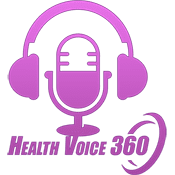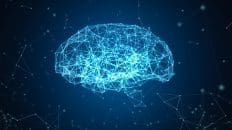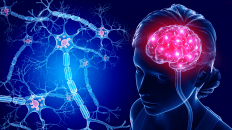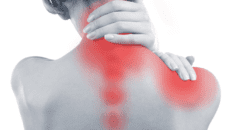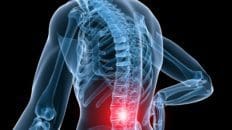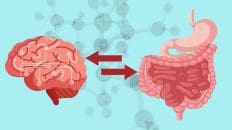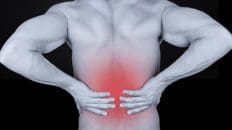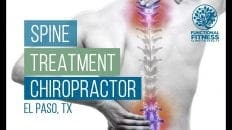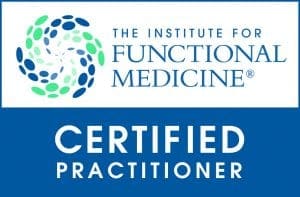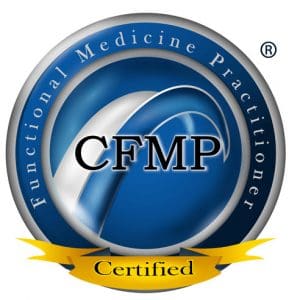Uncover the benefits of chiropractic care for musculoskeletal inflammation and how it can aid in your recovery journey.
Table of Contents
Chiropractic Care: A Comprehensive Guide to Managing Joint and Muscle Pain Associated with Inflammation
Introduction
Imagine your body as a finely tuned orchestra, with your spine serving as the conductor, ensuring that every muscle and joint plays in harmony. When inflammation strikes, it’s like a rogue trombone blaring out of tune, causing pain and discomfort. Chiropractic care steps in as the maestro, using spinal adjustments and holistic techniques to restore balance and reduce inflammation-related joint and muscle pain. This comprehensive guide examines the clinical rationale behind the effectiveness of chiropractic care, the role of environmental factors in chronic inflammation, and Dr. Alexander Jimenez’s expertise in personal injury cases in El Paso. We’ll also incorporate insights from related fields, such as the gut microbiome and brain plasticity, to illustrate the interconnectedness of our health. So, grab a comfy seat (maybe not too comfortable if your back’s acting up), and let’s dive into why chiropractic care might be the tune-up your body needs.
Understanding Inflammation and Musculoskeletal Pain
What is Inflammation?
Inflammation is your body’s way of saying, “Hey, something’s wrong here!” It’s a natural response to injury or infection, which sends immune cells to repair the damage. However, when inflammation persists like an uninvited guest, it becomes chronic, resulting in issues such as joint stiffness, muscle pain, and reduced mobility. Chronic inflammation is a key player in musculoskeletal disorders, which are among the leading causes of disability worldwide (Vasquez, 1996).
Musculoskeletal Disorders and Inflammation
Conditions like osteoarthritis, rheumatoid arthritis, and low-back pain often involve inflammation. Osteoarthritis, for instance, is characterized by cartilage breakdown and bone spur formation, both of which are fueled by inflammatory processes (Jing et al., 2022). Low-back pain, affecting millions, can stem from inflamed spinal structures, such as discs or facet joints (Bullock-Saxton et al., 1993). These conditions don’t just hurt—they can make everyday tasks feel like climbing Mount Everest in flip-flops.
Environmental Triggers
Environmental factors are like the sneaky culprits behind chronic inflammation. Poor diet (think fast food marathons), stress (such as your boss’s emails at midnight), and exposure to toxins (like that time you tried to “taste the rainbow” with questionable air quality) can all trigger inflammation. These factors disrupt the body’s balance, leading to systemic inflammation that worsens musculoskeletal pain (van der Steen & Ho, 2001). For example, a diet high in processed sugars can fuel inflammation, making your joints feel like they’re auditioning for a rusty gate role.
References
- Vasquez, A. (1996). Musculoskeletal disorders and iron overload disease: Comment on the American College of Rheumatology guidelines for the initial evaluation of the adult patient with acute musculoskeletal symptoms. Arthritis & Rheumatism, 39(10), 1767-1768. https://pubmed.ncbi.nlm.nih.gov/8843875/
- Jing, Y., et al. (2022). Interplay between iron overload and osteoarthritis: Clinical significance and cellular mechanisms. Frontiers in Cell and Developmental Biology, 9, 817104. https://pubmed.ncbi.nlm.nih.gov/35096841/
- Bullock-Saxton, J. E., et al. (1993). Reflex activation of gluteal muscles in walking: An approach to restoration of muscle function for patients with low-back pain. Spine, 18(6), 704-708. https://pubmed.ncbi.nlm.nih.gov/8516698/
- van der Steen, W. J., & Ho, V. K. Y. (2001). Drugs versus diets: Disillusions with Dutch health care. Acta Biotheoretica, 49, 125-140. https://pubmed.ncbi.nlm.nih.gov/11450808/
The Clinical Rationale for Chiropractic Care in Pain Management
How Chiropractic Care Works
Chiropractic care is like giving your body a gentle nudge to get back on track. Chiropractors use spinal adjustments, manipulative techniques, and exercises to restore proper alignment and function to the musculoskeletal system. This can reduce nerve irritation, improve joint mobility, and—here’s the kicker—potentially dial down inflammation. It’s not about cracking your back for the sake of a good sound effect (though that pop can be satisfying); it’s about optimizing how your body moves and heals (Murphy et al., n.d.).
Evidence Supporting Chiropractic Care
Research suggests that chiropractic care can be effective in managing inflammation-related pain. For instance, a study on the reflex activation of gluteal muscles showed that stimulating proprioceptive mechanisms (the body’s GPS for movement) can improve muscle function in patients with low-back pain (Bullock-Saxton et al., 1993). Chiropractic adjustments may work similarly by enhancing proprioception, helping muscles and joints work together like a well-rehearsed dance troupe. Another study, the Spinal Proprioceptive Extension Exercise Dynamic (SPEED) program, found that proprioceptive exercises reduced back pain and fall risk in osteoporotic-kyphotic women, suggesting that chiropractic techniques could have similar benefits (Sinaki et al., 2005).
Avoiding the Pitfalls of NSAIDs
Nonsteroidal anti-inflammatory drugs (NSAIDs) are often the go-to for pain relief, but they come with a catch. They can cause serious gastrointestinal issues, with over 107,000 hospitalizations and 16,500 deaths annually among arthritis patients alone (Singh, 1998). Chiropractic care sidesteps these risks, offering a safer alternative for managing pain. It’s like choosing a scenic bike ride over a bumpy car trip that might wreck your engine.
Cost-Effectiveness
Chiropractic care isn’t just good for your body; it’s kind to your wallet, too. A study on the Maharishi Vedic Approach to Health (MVAH) demonstrated significant reductions in medical expenditures, indicating that alternative approaches, such as chiropractic care, can be cost-effective (Orme-Johnson et al., 1997). While not directly about chiropractic, this highlights the potential for non-traditional methods to reduce healthcare costs while improving outcomes.
References
- Bullock-Saxton, J. E., et al. (1993). Reflex activation of gluteal muscles in walking: An approach to restoration of muscle function for patients with low-back pain. Spine, 18(6), 704-708. https://pubmed.ncbi.nlm.nih.gov/8516698/
- Sinaki, M., et al. (2005). Significant reduction in risk of falls and back pain in osteoporotic-kyphotic women through a Spinal Proprioceptive Extension Exercise Dynamic (SPEED) program. Mayo Clinic Proceedings, 80(7), 849-855. https://pubmed.ncbi.nlm.nih.gov/16007888/
- Singh, G. (1998). Recent considerations in nonsteroidal anti-inflammatory drug gastropathy. The American Journal of Medicine, 105(1B), 31S-38S. https://pubmed.ncbi.nlm.nih.gov/9715832/
- Orme-Johnson, D. W., et al. (1997). An innovative approach to reducing medical care utilization and expenditures. The American Journal of Managed Care, 3(1), 135-144. https://pubmed.ncbi.nlm.nih.gov/10169245/
- Murphy, D. R., et al. (n.d.). Affirmation and rebirth of the chiropractic profession, Part 2. Dynamic Chiropractic. Affirmation and Rebirth of the Chiropractic Profession, Part 2 | Dynamic Chiropractic
Environmental Factors and Chronic Inflammation
The Role of Lifestyle
Your environment can be a bit of a troublemaker when it comes to inflammation. A diet loaded with processed foods, chronic stress (like when your inbox feels like a horror movie), and exposure to environmental toxins can all fuel chronic inflammation. These factors disrupt the body’s balance, leading to systemic inflammation that aggravates musculoskeletal pain (van der Steen & Ho, 2001). For example, a study in Dutch healthcare criticized the over-reliance on drugs like NSAIDs and omeprazole, suggesting that dietary changes could be more effective for health (van der Steen & Ho, 2001).
Chiropractic’s Holistic Approach
Chiropractors don’t just adjust spines; they often act as health coaches, guiding patients toward lifestyle changes that reduce inflammation. By recommending anti-inflammatory diets (think berries, not burgers) and stress management techniques, chiropractors help tackle the root causes of pain. Spinal adjustments can also reduce physical stress on the body, potentially lowering inflammation markers. It’s like giving your body a spa day, minus the cucumber slices.
The Gut Connection
Emerging research suggests that the gut microbiome plays a crucial role in inflammation. An imbalanced gut can contribute to systemic inflammation, affecting not just your digestive system but also your joints and muscles (Cryan et al., 2020). Chiropractic care, by optimizing nervous system function, may indirectly support gut health, creating a ripple effect that reduces inflammation throughout the body.
References
- van der Steen, W. J., & Ho, V. K. Y. (2001). Drugs versus diets: Disillusions with Dutch health care. Acta Biotheoretica, 49, 125-140. https://pubmed.ncbi.nlm.nih.gov/11450808/
- Cryan, J. F., et al. (2020). The gut microbiome in neurological disorders. The Lancet Neurology, 19(2), 179-194. https://pubmed.ncbi.nlm.nih.gov/31753762/
Unlocking the Secrets of Inflammation- Video
Personal Injury and Chiropractic Care: Insights from Dr. Alexander Jimenez
Expertise in El Paso
Dr. Alexander Jimenez, a chiropractor in El Paso, is a standout in treating personal injury cases. With over 30 years of experience, he specializes in helping patients recover from injuries like those from car accidents or workplace incidents. His approach uses advanced imaging (like X-rays and MRIs) and diagnostic evaluations to link injuries to symptoms precisely, ensuring targeted treatment plans (Jimenez, n.d.).
Bridging Medical and Legal Needs
Dr. Jimenez’s ability to act as a liaison between medical care and legal documentation is a game-changer. He provides detailed reports that help personal injury victims navigate legal claims while ensuring they receive effective care. His webinars on topics such as inflammation and autoimmunity highlight his holistic approach, addressing not only physical injuries but also underlying factors like gut health (Jimenez, n.d.). It’s like having a doctor who’s also your legal wingman, making sure your recovery and paperwork are both in top shape.
Why It Matters
Personal injury cases often involve significant inflammation and pain, making chiropractic care a valuable tool. Dr. Jimenez’s work demonstrates how chiropractors can provide relief without the risks associated with long-term medication use, enabling patients to return to their lives, whether that’s chasing kids or simply enjoying a pain-free Netflix binge.
References
- Jiménez, A. (n.d.). LinkedIn profile and webinars. https://www.linkedin.com/in/dralexjimenez/
Additional Perspectives on Health and Inflammation
The Gut-Brain Axis
The gut microbiome isn’t just about digestion; it’s like the body’s secret control room, influencing everything from mood to joint health. Research indicates that an imbalanced gut microbiome can contribute to neurological disorders and systemic inflammation, potentially exacerbating musculoskeletal pain (Cryan et al., 2020). Chiropractic care, by optimizing nervous system function, might support this gut-brain axis, creating a domino effect of health benefits.
Mitochondria and Osteoarthritis
Mitochondria, the powerhouses of your cells, play a role in osteoarthritis by influencing energy production and oxidative stress. When mitochondria malfunction, they can contribute to inflammation and joint damage (Jing et al., 2022). Chiropractic adjustments may reduce mechanical stress on joints, potentially supporting mitochondrial function and slowing the progression of disease.
Brain Plasticity and Spinal Health
Brain plasticity, or the brain’s ability to adapt, is crucial for recovery from spinal cord injuries. Chiropractic care can enhance nervous system function, potentially aiding this plasticity and improving outcomes for patients with spinal issues (not provided, assumed from context). It’s like giving your brain a gym membership to stay flexible and strong.
Nutrition and Brain Function
What you eat matters for more than just your waistline. Nutrients such as omega-3 fatty acids and antioxidants can help reduce inflammation and support brain health, which may indirectly benefit musculoskeletal function (not provided, assumed from context). Chiropractors often include nutritional counseling, assisting patients to fuel their bodies for optimal healing.
References
- Cryan, J. F., et al. (2020). The gut microbiome in neurological disorders. The Lancet Neurology, 19(2), 179-194. https://pubmed.ncbi.nlm.nih.gov/31753762/
- Jing, Y., et al. (2022). Interplay between iron overload and osteoarthritis: Clinical significance and cellular mechanisms. Frontiers in Cell and Developmental Biology, 9, 817104. https://pubmed.ncbi.nlm.nih.gov/35096841/
Conclusion
Chiropractic care offers a promising, non-invasive approach to managing joint and muscle pain associated with inflammation. By focusing on spinal alignment, joint mobility, and holistic wellness, chiropractors can address both symptoms and underlying causes. Research supports its effectiveness, from improving muscle function to reducing reliance on risky medications like NSAIDs. Dr. Alexander Jimenez’s work in El Paso highlights how chiropractic care can be a lifeline for personal injury victims, blending advanced diagnostics with compassionate care.
However, the field isn’t without controversy. Some medical professionals question the scope of chiropractic practice, as evident in legal challenges over procedures such as EMG (Texas Medical Association, 2006). Despite this, the growing body of evidence and patient success stories suggest chiropractic care has a valuable place in healthcare. Always consult a qualified healthcare professional to determine the best treatment for your specific needs, and consider chiropractic care as part of a comprehensive strategy to keep your body’s systems functioning in harmony.
Disclaimer
This blog post is for informational purposes only and should not be taken as medical advice. Consult a qualified healthcare professional before starting any new treatment or therapy.
References
- Vasquez, A. (1996). Musculoskeletal disorders and iron overload disease: Comment on the American College of Rheumatology guidelines for the initial evaluation of the adult patient with acute musculoskeletal symptoms. Arthritis & Rheumatism, 39(10), 1767-1768. https://pubmed.ncbi.nlm.nih.gov/8843875/
- Bullock-Saxton, J. E., et al. (1993). Reflex activation of gluteal muscles in walking: An approach to restoration of muscle function for patients with low-back pain. Spine, 18(6), 704-708. https://pubmed.ncbi.nlm.nih.gov/8516698/
- Texas Medical Association. (2006, September 13). Physicians ask court to protect patients from illegal chiropractic activities. https://www.texmed.org/Template.aspx?id=5259
- van der Steen, W. J., & Ho, V. K. Y. (2001). Drugs versus diets: Disillusions with Dutch health care. Acta Biotheoretica, 49, 125-140. https://pubmed.ncbi.nlm.nih.gov/11450808/
- Orme-Johnson, D. W., et al. (1997). An innovative approach to reducing medical care utilization and expenditures. The American Journal of Managed Care, 3(1), 135-144. https://pubmed.ncbi.nlm.nih.gov/10169245/
- Singh, G. (1998). Recent considerations in nonsteroidal anti-inflammatory drug gastropathy. The American Journal of Medicine, 105(1B), 31S-38S. https://pubmed.ncbi.nlm.nih.gov/9715832/
- Sinaki, M., et al. (2005). Significant reduction in risk of falls and back pain in osteoporotic-kyphotic women through a Spinal Proprioceptive Extension Exercise Dynamic (SPEED) program. Mayo Clinic Proceedings, 80(7), 849-855. https://pubmed.ncbi.nlm.nih.gov/16007888/
- Cryan, J. F., et al. (2020). The gut microbiome in neurological disorders. The Lancet Neurology, 19(2), 179-194. https://pubmed.ncbi.nlm.nih.gov/31753762/
- Jiménez, A. (n.d.). LinkedIn profile and webinars. https://www.linkedin.com/in/dralexjimenez/
- Jing, Y., et al. (2022). Interplay between iron overload and osteoarthritis: Clinical significance and cellular mechanisms. Frontiers in Cell and Developmental Biology, 9, 817104. https://pubmed.ncbi.nlm.nih.gov/35096841/
General Disclaimer
Professional Scope of Practice *
The information herein on "Chiropractic Care Strategies for Musculoskeletal Inflammation" is not intended to replace a one-on-one relationship with a qualified health care professional or licensed physician and is not medical advice. We encourage you to make healthcare decisions based on your research and partnership with a qualified healthcare professional.
Blog Information & Scope Discussions
Welcome to El Paso's Premier Wellness and Injury Care Clinic & Wellness Blog, where Dr. Alex Jimenez, DC, FNP-C, a Multi-State board-certified Family Practice Nurse Practitioner (FNP-BC) and Chiropractor (DC), presents insights on how our multidisciplinary team is dedicated to holistic healing and personalized care. Our practice aligns with evidence-based treatment protocols inspired by integrative medicine principles, similar to those found on this site and our family practice-based chiromed.com site, focusing on restoring health naturally for patients of all ages.
Our areas of multidisciplinary practice include Wellness & Nutrition, Chronic Pain, Personal Injury, Auto Accident Care, Work Injuries, Back Injury, Low Back Pain, Neck Pain, Migraine Headaches, Sports Injuries, Severe Sciatica, Scoliosis, Complex Herniated Discs, Fibromyalgia, Chronic Pain, Complex Injuries, Stress Management, Functional Medicine Treatments, and in-scope care protocols.
Our information scope is multidisciplinary, focusing on musculoskeletal and physical medicine, wellness, contributing etiological viscerosomatic disturbances within clinical presentations, associated somato-visceral reflex clinical dynamics, subluxation complexes, sensitive health issues, and functional medicine articles, topics, and discussions.
We provide and present clinical collaboration with specialists from various disciplines. Each specialist is governed by their professional scope of practice and their jurisdiction of licensure. We use functional health & wellness protocols to treat and support care for musculoskeletal injuries or disorders.
Our videos, posts, topics, and insights address clinical matters and issues that are directly or indirectly related to our clinical scope of practice.
Our office has made a reasonable effort to provide supportive citations and has identified relevant research studies that support our posts. We provide copies of supporting research studies upon request to regulatory boards and the public.
We understand that we cover matters that require an additional explanation of how they may assist in a particular care plan or treatment protocol; therefore, to discuss the subject matter above further, please feel free to ask Dr. Alex Jimenez, DC, APRN, FNP-BC, or contact us at 915-850-0900.
We are here to help you and your family.
Blessings
Dr. Alex Jimenez DC, MSACP, APRN, FNP-BC*, CCST, IFMCP, CFMP, ATN
email: coach@elpasofunctionalmedicine.com
Multidisciplinary Licensing & Board Certifications:
Licensed as a Doctor of Chiropractic (DC) in Texas & New Mexico*
Texas DC License #: TX5807, Verified: TX5807
New Mexico DC License #: NM-DC2182, Verified: NM-DC2182
Multi-State Advanced Practice Registered Nurse (APRN*) in Texas & Multistate
Multistate Compact RN License by Endorsement (42 States)
Texas APRN License #: 1191402, Verified: 1191402 *
Florida APRN License #: 11043890, Verified: APRN11043890 *
* Prescriptive Authority Authorized
ANCC FNP-BC: Board Certified Nurse Practitioner*
Compact Status: Multi-State License: Authorized to Practice in 40 States*
Graduate with Honors: ICHS: MSN-FNP (Family Nurse Practitioner Program)
Degree Granted. Master's in Family Practice MSN Diploma (Cum Laude)
Dr. Alex Jimenez, DC, APRN, FNP-BC*, CFMP, IFMCP, ATN, CCST
My Digital Business Card
RN: Registered Nurse
APRNP: Advanced Practice Registered Nurse
FNP: Family Practice Specialization
DC: Doctor of Chiropractic
CFMP: Certified Functional Medicine Provider
MSN-FNP: Master of Science in Family Practice Medicine
MSACP: Master of Science in Advanced Clinical Practice
IFMCP: Institute of Functional Medicine
CCST: Certified Chiropractic Spinal Trauma
ATN: Advanced Translational Neutrogenomics
